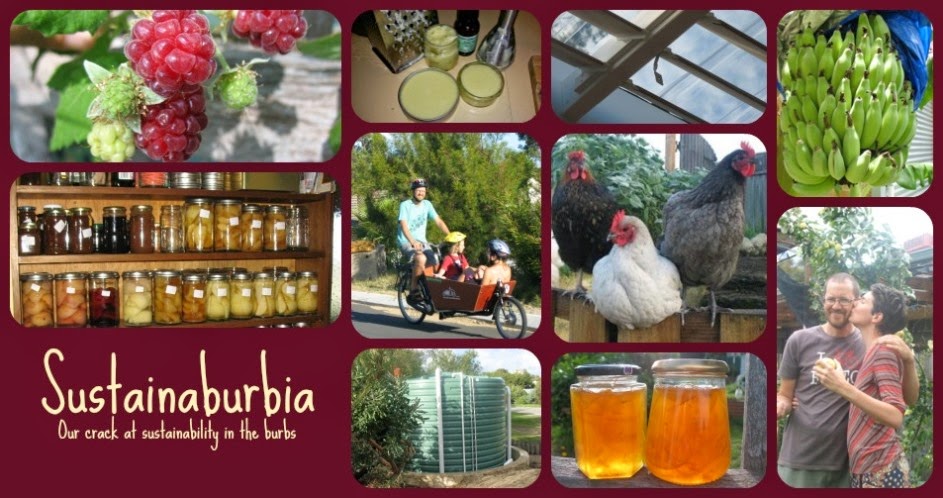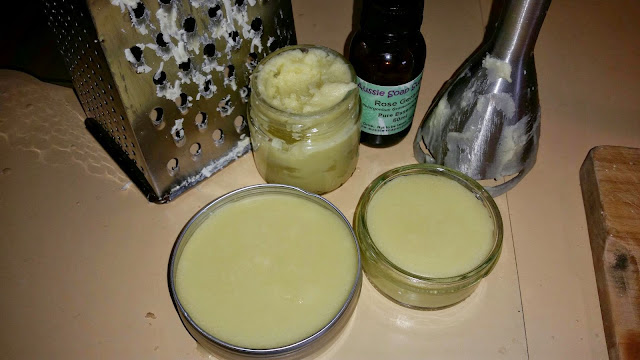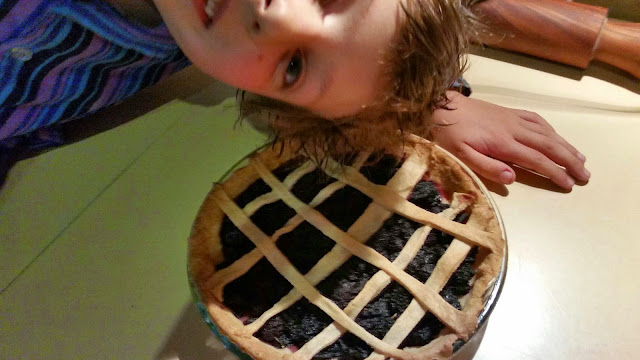My sister is a beautiful soul and has been a role model for me throughout my life. She was with me when Quincey was born and was such a source of strength and comfort for me - then and at when ever I've needed her. I don't know what I would have done without her at times. Now though, its my turn to help her as she is returning to work after several years off with her own young kids. My sister is a midwife and to be sure, the best sort of midwife you could hope for - calm, non-judgmental, reassuring, honest and skilled.
She is also very good on general hygiene, ie washing her hands at work and has really dry skin now, so I made her some home made hand cream. My friend made some for me recently and I just love it! Its Creme Galen Cold Cream and according to the recipe was created by the Roman doctor Aurelius Galenus (AD 129 - 217).
5 oz rose water
1 oz unbleached beeswax
6 oz extra virgin olive oil
8 drops rose essential oil
Grate the bees wax. Gently heat the rose water in a glass bowl in a hot water bath. In a separate bowl combine the beeswax and oil and then gently heat until liquid. Remove both bowls from heat and slowly pour the rose water into the oil and wax blend. Mix with a stick blender until combined. Add the essential oil and stir. Before the liquid cools and sets, pour into clean small jars or tins.
It was particularly satisfying making this because I used bees wax from a friends backyard hive and olive oil from our last Great Hilton Harvest Olive Pressing. Okay, the rose water was from Syria and I'm not sure about the rose oil.
I use the cream at night as it is quite heavy and makes my skin shiny. In the morning I just slash my face with water and away I go. I use it on my hands, legs and face. I don't understand why people need a hand cream, a face cream and a body cream. Last time I checked my face and hands were a part of my body!
She is also very good on general hygiene, ie washing her hands at work and has really dry skin now, so I made her some home made hand cream. My friend made some for me recently and I just love it! Its Creme Galen Cold Cream and according to the recipe was created by the Roman doctor Aurelius Galenus (AD 129 - 217).
5 oz rose water
1 oz unbleached beeswax
6 oz extra virgin olive oil
8 drops rose essential oil
Grate the bees wax. Gently heat the rose water in a glass bowl in a hot water bath. In a separate bowl combine the beeswax and oil and then gently heat until liquid. Remove both bowls from heat and slowly pour the rose water into the oil and wax blend. Mix with a stick blender until combined. Add the essential oil and stir. Before the liquid cools and sets, pour into clean small jars or tins.
I use the cream at night as it is quite heavy and makes my skin shiny. In the morning I just slash my face with water and away I go. I use it on my hands, legs and face. I don't understand why people need a hand cream, a face cream and a body cream. Last time I checked my face and hands were a part of my body!




